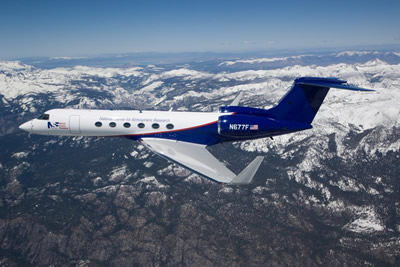This aircraft is a modified Gulfstream V jet and can carry 5600 pounds of weather instruments that collect data from the Earth's atmosphere. The aircraft is maintained and operated for the National Science Foundation by the National Center for Atmospheric Research.
Click on image for full size
Image courtesy of the University Corporation for Atmospheric Research
Research Aircraft
Scientists sometimes travel in specially outfitted airplanes in order to gather data about atmospheric conditions. These research aircraft have special inlet ports that bring air from the outside into the plane so scientists can sample it and make measurements. Some research airplanes also carry radar and other special instruments.
Airplanes can collect information about many different components of the atmosphere, including aerosols, cloud physics, atmospheric chemistry, high level winds, and radiation. They can also carry camera to take photographs of clouds from up in the air. Scientists use the information gathered by aircraft to learn more about topics like how clouds form, the effects of air pollution in the atmosphere, and what causes turbulence.
Research aircraft can fly as high as 20,000 kilometers (approximately 65,000 feet). Ships can also carry instruments that gather data about the atmosphere, the ocean, weather, and climate.
You might also be interested in:
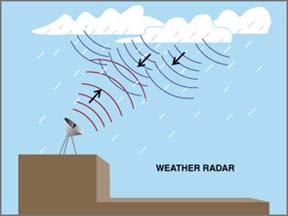
Radar is important to weather forecasters because it can detect rain and hail in clouds. The radar emits radio waves in all directions. When a radio wave hits water or ice particles, some of the energy
...more
Aerosols, also called particulates, are tiny bits of solid or liquid suspended in the air. Some aerosols are so small that they are made only of a few molecules – so small that they are invisible because
...more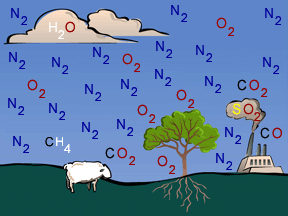
Chemistry plays an influential role in the behavior of the lowest layer of Earth's atmosphere, the troposphere. The various gases in the troposphere are constantly mixing with and reacting with each other.
...more
Wind is moving air. Warm air rises, and cool air comes in to take its place. This movement creates different pressures in the atmosphere which creates the winds around the globe. Since the Earth spins,
...more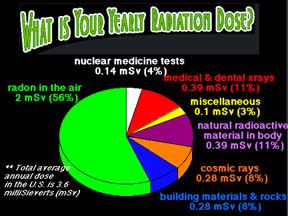
Radiation comes in two basic types: electromagnetic radiation transmitted by photons, and particle radiation consisting of electrons, protons, alpha particles, and so forth. Electromagnetic radiation,
...more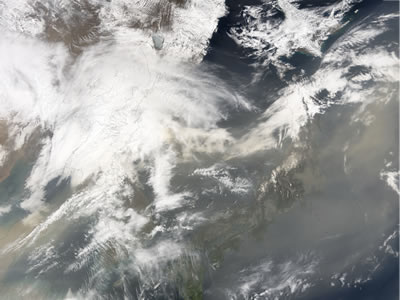
When clouds form they contain millions of water droplets in each cubic meter of air. Each of the cloud droplets forms on a particle; scientists call a collection of particles an aerosol. These particles
...more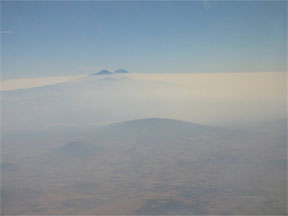
What do smog, acid rain, carbon monoxide, fossil fuel exhausts, and tropospheric ozone have in common? They are all examples of air pollution. Air pollution is not new. As far back as the 13 th century,
...more


